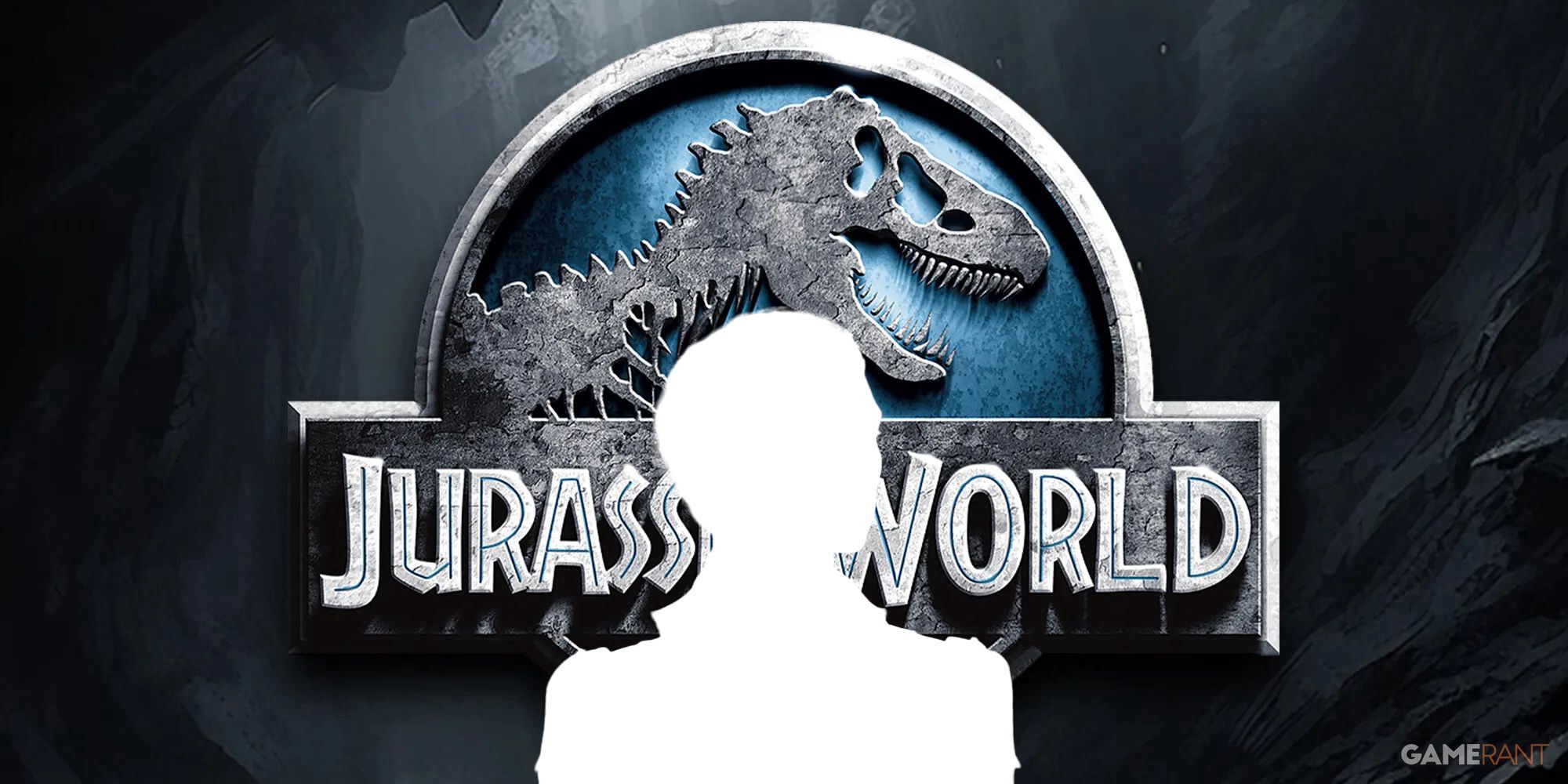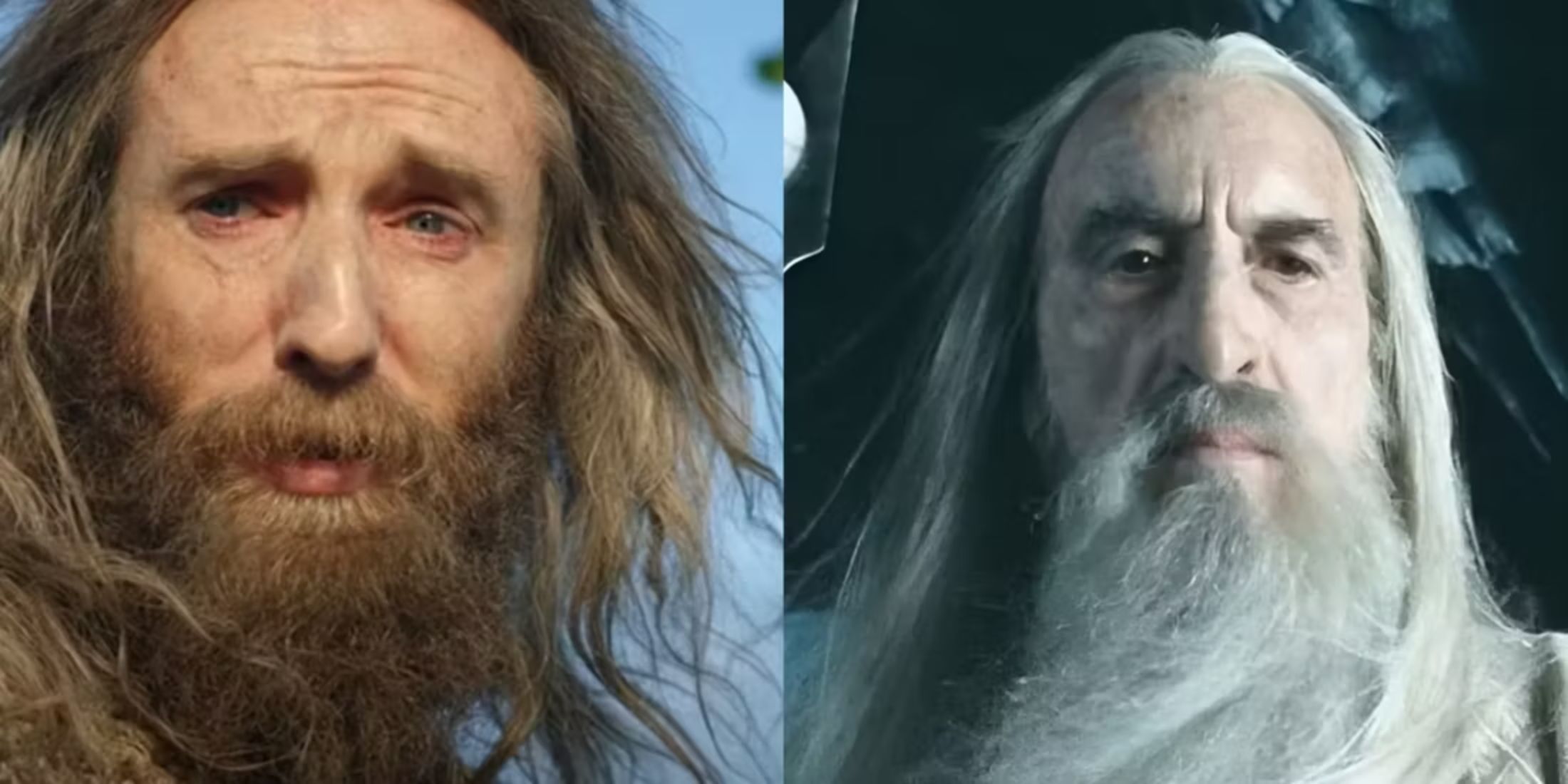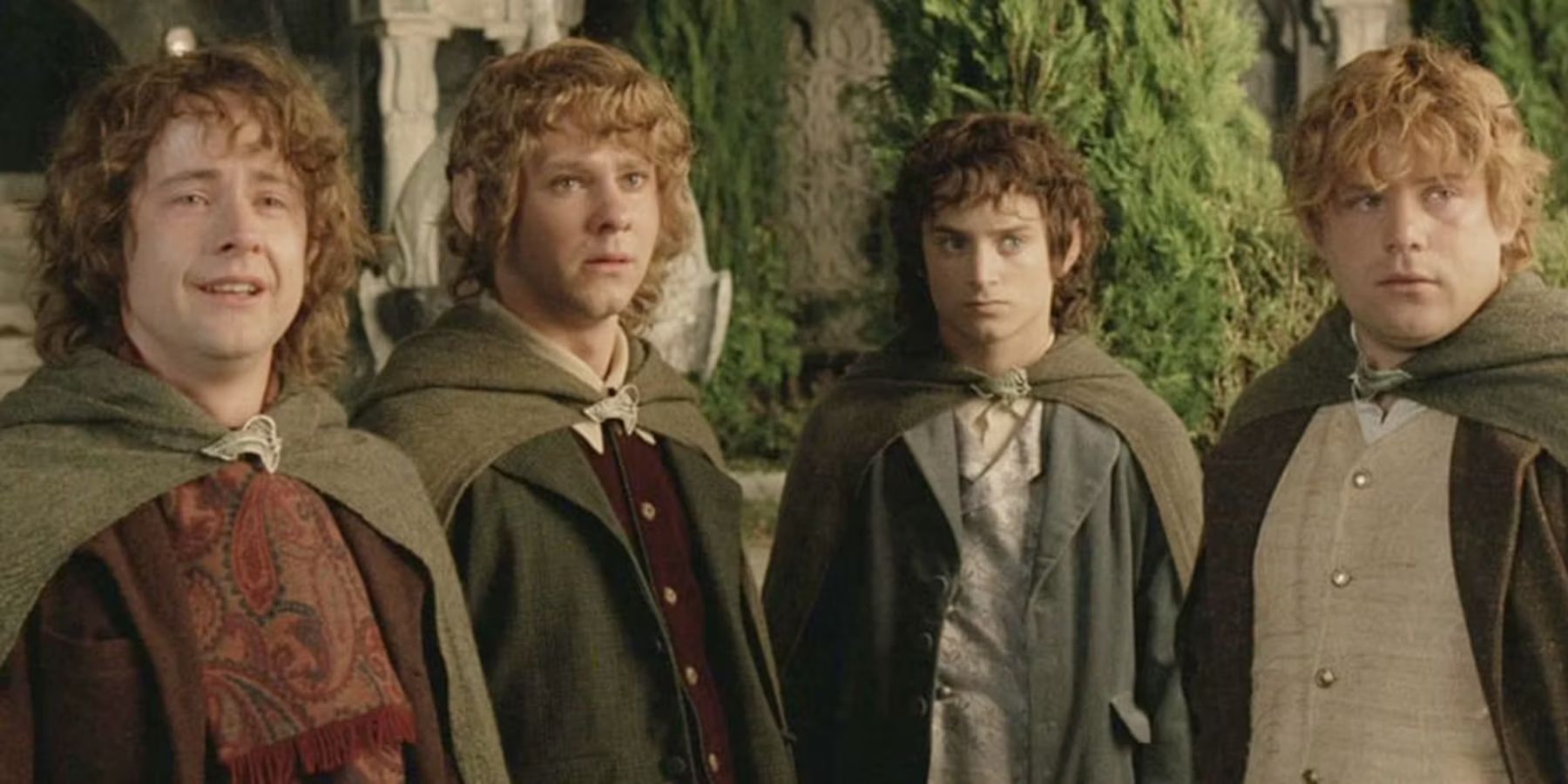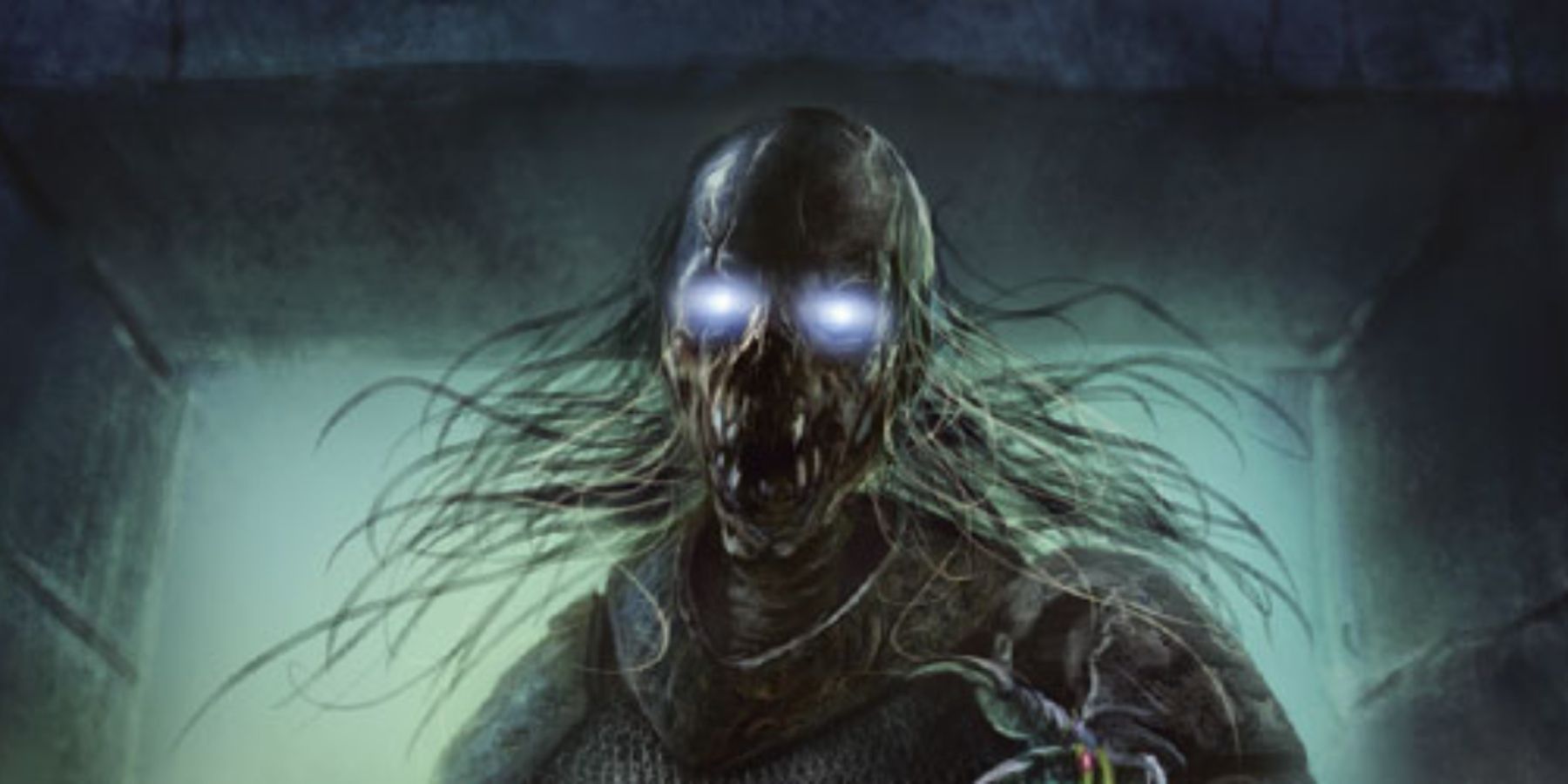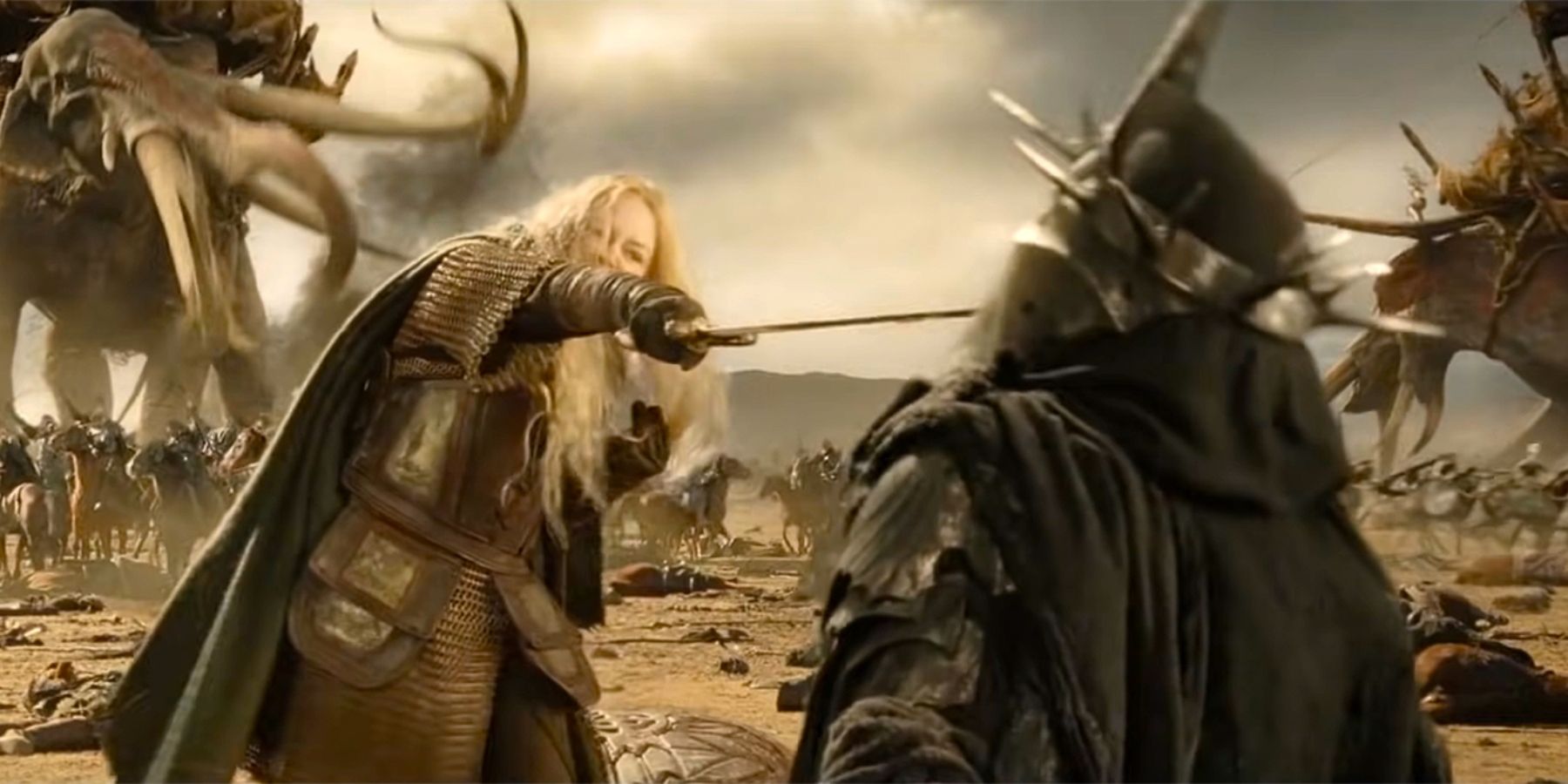Named weapons are often critical to a fantasy universe. Tolkien created countless enchanted swords, axes, bows, and hammers to lend additional mythos to heroes and villains. Aragorn's Andúril was an unbreakable blade and a symbol of his heritage. Each of the four Hobbits who join the Fellowship earns a mighty weapon, a Barrow-blade, which helped turn the tide of the War of the Ring.
Tom Bombadil holds a bizarre place in the Lord of the Rings fandom. He's the exact point at which a casual fan becomes a devotee. In the 20 years since Peter Jackson's film trilogy premiered, everyone has heard complaints that Tom was cut out of the big-screen ordeal. Many will defend him as the mightiest figure in the franchise, so Tom's limited impact on the story must be examined.
Where did the Barrow-blades come from?
The great Northern Kingdom of Arnor split into three smaller regions after High King Eärendur's death. Amlaith of Fornost, the rightful heir, called his land Arthedain. Almost 500 years after Amlaith established Arthedain, the Lord of the Nazgûl erected the Land of Angmar on Arthedain's north-eastern border. The Witch-king of Angmar was the mightiest of the Nazgûl, and his kingdom threatened all successors of Arnor. Over several years, Angmar made war against the three successors, gradually consuming each. Arthedain fell in TA 1974, but an army from Gondor drove the Witch-king's forces back the following year. Arthedain's last prince, Aranath, decided to let the kingdom die and became the Chieftain of the Dúnedain. The resistance lasted 675 years, but its efforts took many forms.
The smiths of Arthedain forged mighty daggers using ancient magic to defeat the undead Barrow-wights who destroyed their kin. These shape-shifting phantoms could kill with a touch but only feared sunlight. An area known as the Barrow-downs became home to these wraiths and weapons that could destroy them. The Barrow-blades were long knives forged from unknown metal and inlaid with shining red and orange gemstones. Their leaf-shaped edge was decorated with red and gold snake patterns. Four Barrow-blades were buried in the Barrow-downs next to a prince's body. Tom Bombadil found the weapons and their new wielders in that unfortunate place.
What happened to each Barrow-blade?
Frodo, Sam, Pippin, and Merry found themselves in the clutches of a Barrow-wight. The phantoms preferred to kill their targets through a lengthy ritual. Tom Bombadil interrupted the Wight's attack, resisting their powerful incantation with his song. Tom found the Barrow-blades among the Wight's treasure and distributed the four blades to the Hobbits, reasoning that the daggers would make swords for the small folk. Each knife followed a different story.
Frodo
Frodo's Barrow-blade was the shortest-lived. He drew the sword once in conflict with the Witch-king of Angmar. It saved his life, but he was still severely wounded. The Witch-king stabbed him in the shoulder with a Morgul-knife, but the damage left him near death. Had he not defended himself, the villain's blade would have pierced his heart, converting him into a Ringwraith. The Barrow-blade shattered, but Frodo received his father's notorious Elven sword, Sting.
Sam
Sam used his Barrow-blade to kill his first Orc at the Battle of the Bridge of Khazad-dûm. Sam was never known for his combat abilities, but the sword allowed him to put at least one body on the board. He surrendered his blade, leaving it on Frodo's body after he thought his best friend had died in his encounter with Shelob. The mighty Black Uruk Captain Shagrat found the Barrow-blade and Frodo's sought-after Mithril Coat. He collected both treasures and handed them to the Mouth of Sauron. Gandalf found and returned them to their rightful owners.
Pippin
Pippin drove his Barrow-blade into a Hill-troll at the Battle of the Black Gate, claiming an impressive kill. He would call the sword a "troll's bane" for the rest of his days. Pippin wielded his Barrow-blade again at the Scouring of the Shire, where he and his fellow Hobbits battled Lotho Sackville-Baggins' efforts to industrialize the green land. He and Merry led the Hobbits in the Battle of Bywater, where they drove the last of Saruon's forces away from their ancestral home.
Merry
The most impressive use of the Barrow-blades finally claimed the target they were forged to kill. Merry fought at the Battle of Pelennor Fields, where he and Éowyn fought the Witch-king of Angmar. The Nazgûl caught the Riders of Rohan off-guard and injured Théoden, leaving Merry and Éowyn alone against the Witch-king. Éowyn struggled to defeat the mightiest Ringwraith until Merry launched a sneak attack. He buried his Barrow-blade in the back of the Witch-king's knee. The sword's unique enchantment broke the dark magic that bound the Witch-king's long-dead flesh to his will, leaving him immobile. As he stood, Éowyn delivered a killing blow, finally ending the Witch-king. Like every weapon that touched the Witch-king, his Barrow-blade melted away.
The Barrow-blades served their purpose, though their creators could never have imagined their wielders. The long history behind the Hobbits' swords demonstrates the worldwide effort to defeat Sauron. Blacksmiths from a kingdom that no longer existed provided the daggers that became swords, eventually eliminating the monster that threatened them. Every weapon has a story, and Merry's Barrow-blade has a fascinating ending.


